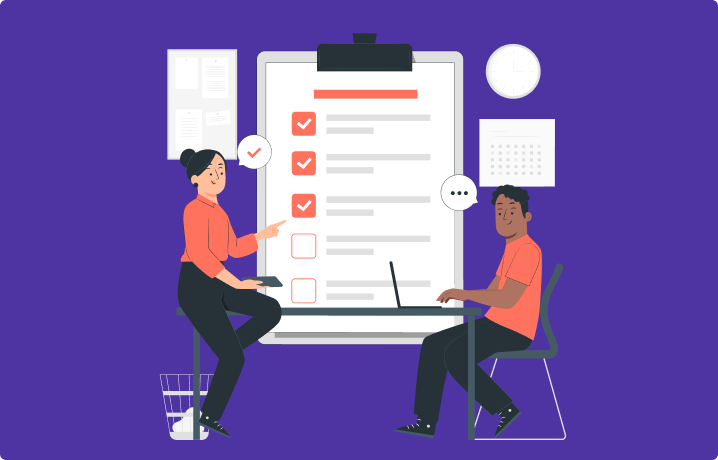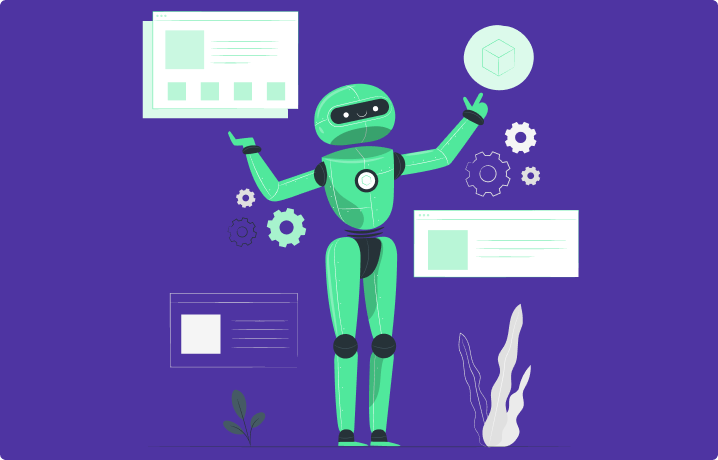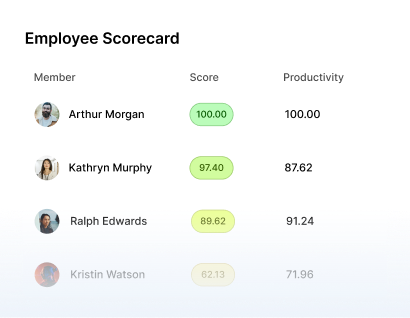People Analytics: An Essential Guide for 2025

As we enter 2025, the role of data in shaping organizational decisions has never been more significant.
Among the most transformative developments is People Analytics, a method of leveraging data to enhance decision-making related to employees.
Whether it’s improving recruitment processes, boosting employee engagement, or fostering better leadership, People Analytics has become a vital tool for businesses aiming to gain a competitive edge.
This guide will explore the essential components of People Analytics, its benefits, and how organizations can effectively implement it in 2025.
What is People Analytics?
People Analytics, also known as Human Resources (HR) Analytics, refers to the use of data-driven methods to understand, improve, and predict workforce behavior and performance. By analyzing employee data, organizations can uncover patterns, identify areas for improvement, and make informed decisions about hiring, development, and retention strategies.
People Analytics typically involves collecting data on various aspects of an employee’s journey, such as recruitment, engagement, productivity, and turnover. By applying statistical techniques, organizations can uncover insights that drive more effective HR strategies.

The Benefits of People Analytics in 2025
In 2025, People Analytics is expected to play an even more critical role in shaping business strategies. Some of the key benefits include:
- Improved Recruitment:
By using data to assess candidate fit, companies can make more objective hiring decisions and reduce biases in the process. - Increased Employee Retention:
Data analytics can help identify trends and factors that lead to employee dissatisfaction, allowing HR teams to address potential issues before they result in turnover. - Enhanced Performance Management:
Analytics can reveal the most effective development and management strategies, helping businesses optimize employee productivity and engagement.
Key Components of People Analytics
To successfully implement People Analytics, companies must focus on several core components:
Maximize productivity of your business
Track employee productivity and simplify work with them
How to Implement People Analytics in 2025

Successfully implementing People Analytics requires a strategic approach that integrates data collection, analysis, and actionable insights into HR processes. Here’s a more detailed breakdown of the key steps organizations should follow to make People Analytics effective:
1. Define Your Goals and Objectives
Before diving into data collection, it’s crucial to have a clear understanding of what you want to achieve with People Analytics. Start by identifying specific goals that align with your broader business objectives. Some common goals include:
- Reducing employee turnover
- Improving diversity and inclusion
- Enhancing employee engagement
- Streamlining the recruitment process
- Identifying future leaders
For example, if your organization struggles with high employee turnover, your objective might be to use People Analytics to identify the underlying causes and implement retention strategies. If leadership development is a priority, you can focus on tracking and analyzing employee performance metrics to pinpoint leadership potential.
2. Collect Data Responsibly and Effectively
Once you’ve established clear goals, the next step is data collection. The key is to collect comprehensive, high-quality data while ensuring ethical standards and data privacy compliance are met. Here are some types of data you might collect:
- Employee Demographics: Age, gender, tenure, education level
- Performance Metrics: Sales numbers, customer feedback, performance reviews
- Engagement Data: Survey responses, pulse checks, employee feedback
- Attendance Records: Absenteeism, sick leaves, vacation patterns
- Turnover Data: Reasons for departure, exit interview responses
It’s vital to capture data from multiple sources, including HR systems, employee surveys, and productivity tools like Monitask, which can provide insight into time tracking and work habits. However, you must also ensure that data is collected ethically and with employee consent, especially when dealing with sensitive information.
3. Invest in the Right Tools and Technology
Effective People Analytics relies heavily on technology. In 2025, there are numerous HR and analytics tools designed to simplify data collection, analysis, and visualization. Investing in the right technology stack can streamline the process and help you turn raw data into actionable insights.
Key technologies to consider include:
- HR Analytics Platforms: Platforms like SAP SuccessFactors, Workday, or Tableau for advanced reporting and analytics.
- AI and Machine Learning Tools: Tools that can predict employee turnover or assess leadership potential based on data.
- Data Integration Tools: Platforms like Microsoft Power BI or Google Data Studio to combine different data sources into one unified dashboard.
Automating data collection and analysis can save time and ensure that your insights are accurate and up-to-date. These tools also help provide a real-time overview of employee trends, making it easier for HR to respond proactively.
4. Analyze Data to Derive Actionable Insights
Once you’ve gathered the necessary data, the next step is to analyze it to uncover patterns, trends, and insights that can inform strategic decisions. Analysis might include:
- Trend Identification: Analyzing long-term patterns in employee engagement or performance metrics.
- Correlation Analysis: Looking for correlations between factors like employee tenure and turnover or engagement scores and performance ratings.
- Predictive Analytics: Using historical data to forecast future outcomes, such as which employees are likely to leave or who may be potential leaders.
For example, if your data reveals that employees in certain departments consistently have low engagement scores, you might investigate the specific factors (e.g., workload, management style, team dynamics) contributing to this. Predictive models can also help HR departments anticipate future hiring needs or predict which employees may be at risk of leaving.
5. Act on Insights to Drive Change
The final, and perhaps most important, step is taking action based on the insights derived from your data analysis. This is where People Analytics moves from being a theoretical exercise to a powerful tool for transformation.
Here are some ways to act on your People Analytics insights:
- Develop Targeted Interventions: If People Analytics shows that a specific department has a high turnover rate due to management issues, develop training programs or coaching initiatives to improve leadership in that area.
- Improve Hiring Processes: If data reveals that certain personality traits or experiences correlate with success in your organization, adjust your recruitment strategies to target candidates with these qualities.
- Enhance Employee Engagement: Use survey data to tailor employee engagement programs that address specific areas of concern, such as work-life balance or career development opportunities.
- Optimize Workforce Planning: Predictive models can help HR forecast workforce needs based on business growth or seasonal demand, ensuring the right staffing levels are always maintained.
6. Monitor and Refine Your Strategy
After implementing changes based on People Analytics, it’s crucial to track the effectiveness of those interventions. Regularly assess how well your People Analytics strategy is working by monitoring key metrics, such as turnover rates, employee satisfaction scores, and recruitment success.
The Role of Artificial Intelligence (AI) in People Analytics

In 2025, AI is expected to further revolutionize People Analytics by automating tasks and providing deeper insights. AI can assist in:
- Predicting Employee Turnover: AI algorithms can analyze various factors to predict which employees are likely to leave, helping HR take proactive steps.
- Identifying Leadership Potential: AI tools can assess qualities like problem-solving, collaboration, and innovation to identify future leaders within the organization.
- Personalized Development Plans: By analyzing individual performance data, AI can recommend personalized learning paths for employees, helping them grow within the company.
Challenges of People Analytics
While People Analytics offers significant advantages, it’s not without challenges. These include:
- Data Privacy Concerns: Collecting and analyzing employee data must be done ethically and in compliance with privacy laws.
- Interpretation Issues: Misinterpreting data can lead to poor decisions. It’s essential to ensure that analytics teams have the right expertise.
- Resistance to Change: Introducing a data-driven culture in HR may be met with resistance from employees or managers who are used to more traditional methods.
Conclusion
People Analytics is rapidly becoming a must-have tool for organizations looking to stay competitive in 2025.
By leveraging data to inform decisions related to recruitment, retention, and performance management, companies can build stronger, more productive teams.
However, successful implementation requires a clear strategy, the right technology, and a commitment to ethical data practices.
As AI continues to enhance analytics capabilities, People Analytics will play an even more prominent role in shaping the future of work.
– The Monitask Team
Frequently Asked Questions
How can People Analytics benefit my company?
People Analytics can help improve recruitment, reduce employee turnover, and enhance performance management by providing data-driven insights that lead to more effective decision-making.
Is People Analytics ethical?
People Analytics can be ethical when implemented with a focus on data privacy and transparency. Companies must comply with privacy laws like GDPR and be open with employees about how their data is collected and used.
What role does AI play in People Analytics?
AI can enhance People Analytics by automating data collection and analysis, predicting employee turnover, identifying leadership potential, and personalizing development plans for employees.



